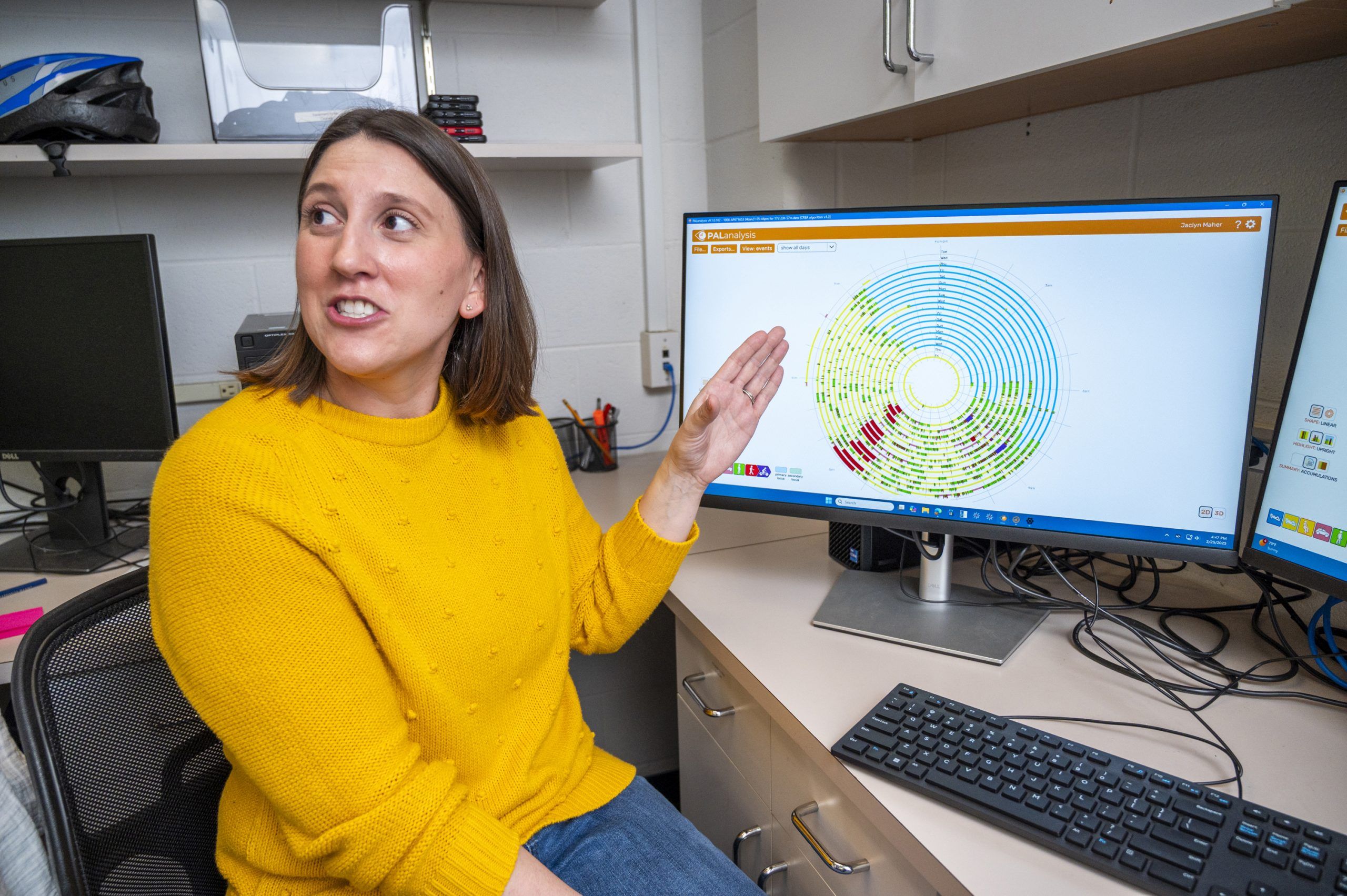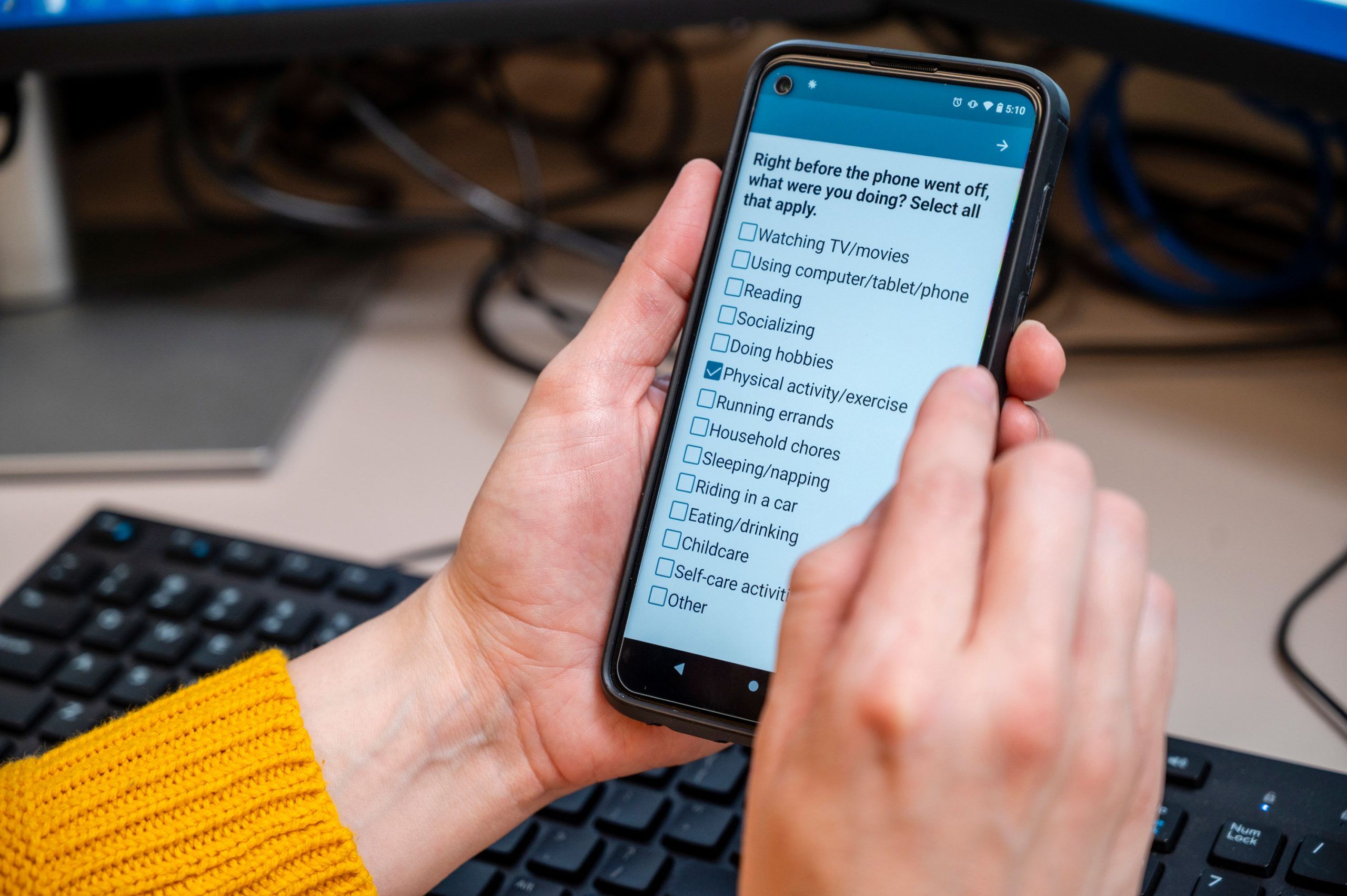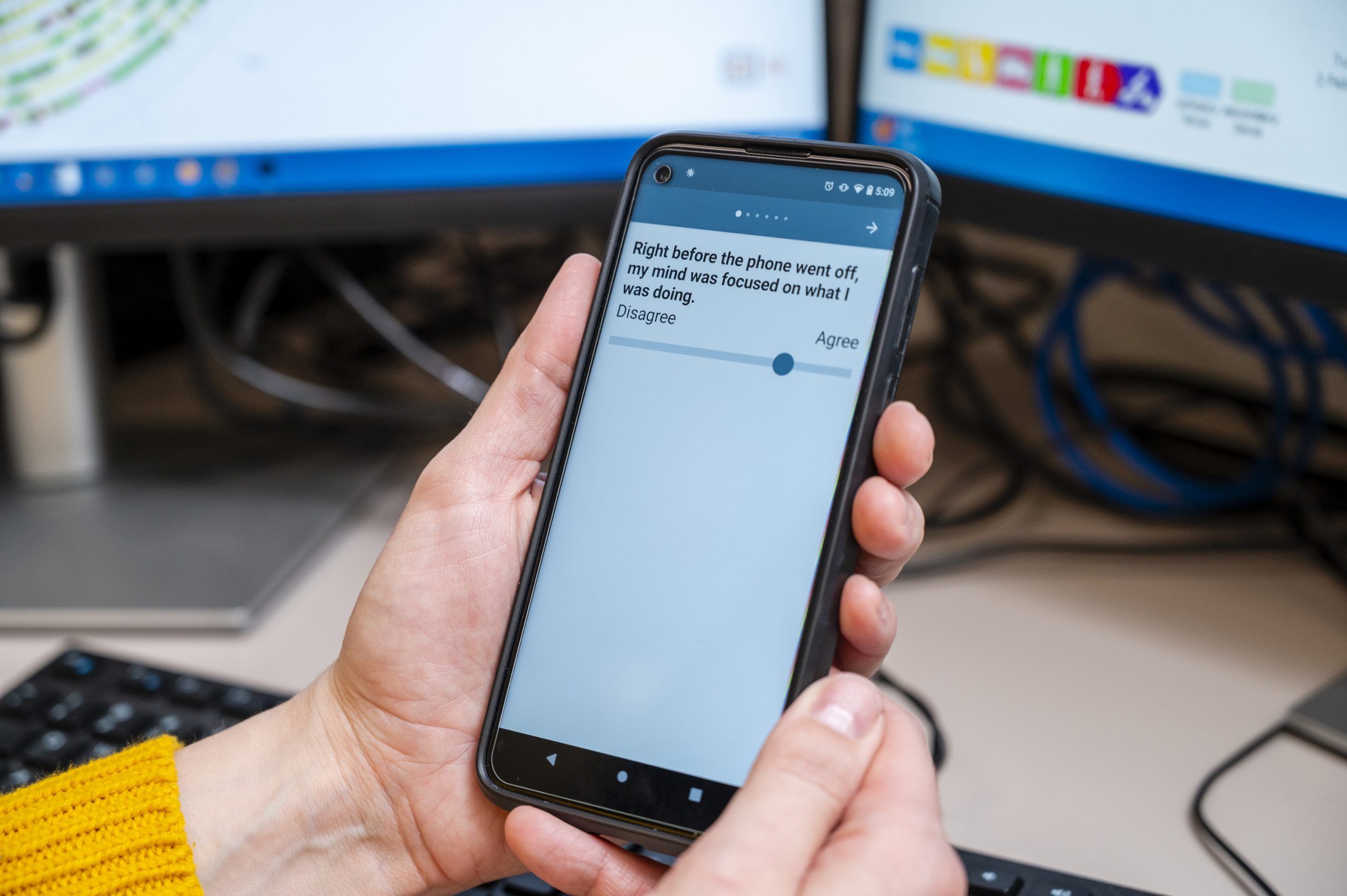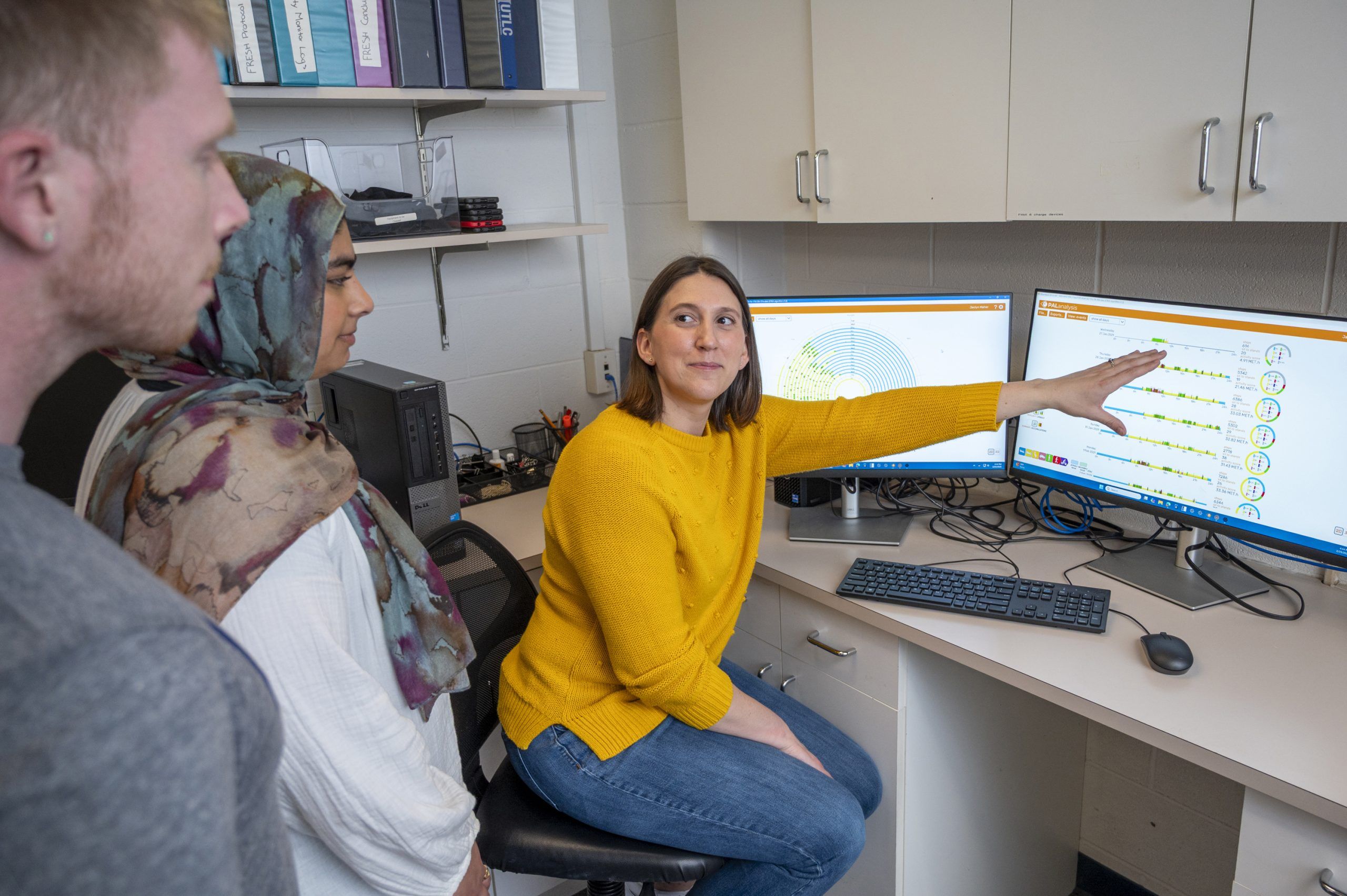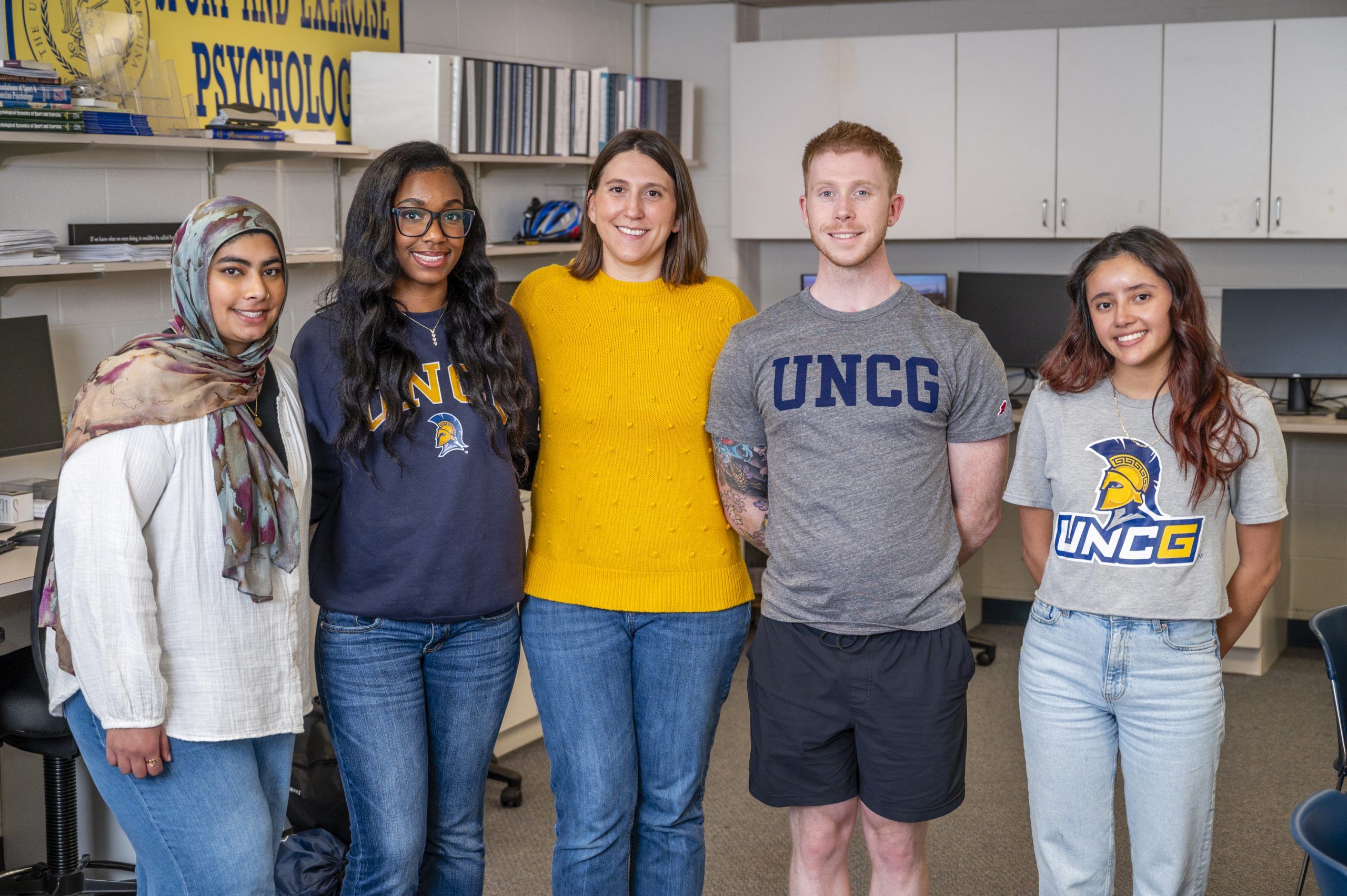The Science of Aging Well
An interview with our 2024 UNCG Early Career Research Excellence Award winner
We understand that too much sedentary activity, especially as we age, is unhealthy. Less well understood is what motivates older adults to be physically active – over the course of the day and within their natural environments.
UNCG Associate Professor of Kinesiology Jaclyn Maher has pioneered methods to find out. We sat down to chat with the internationally recognized early-career scholar, who already has 70 publications and over 3,700 citations to her name.
“I’m passionate about being able to generate new knowledge and helping inform physical activity promotion efforts. That’s really powerful, I think. What keeps me coming back to this work is the freedom I have to explore the things that I am passionate about.”
Most researchers in Dr. Maher’s area study conscious motivations behind physical activity. Maher is seeking to understand how automatic, possibly unconscious, processes influence the physical activity of older adults: How cues in daily life lead one to take a walk, for example, and how people can design cues for themselves to develop physical activity habits. She is trying to help older adults be more active automatically, with less deliberation that requires conscious mental effort.
“Older adults represent one of the least active, most sedentary and fastest-growing segments of the population, which makes this work particularly impactful. There is a huge need and a lot of room to move the needle.”
“People are living longer, and we want to make sure that those additional years of life are quality years. This also has ripple effects for society by reducing healthcare spending and lessening the burden on caregivers.”
Maher has demonstrated that momentary motivational states within someone’s day predict their physical activity behaviors better than their overall levels of motivation.
She was also the first to prove that a tool used by kinesiologists to study youth and adults – called ecological momentary assessment – works with older adults in general and with older adults from vulnerable and understudied populations.
“Using smartphone prompts multiple times per day, we are able to obtain in-the-moment information about people’s physical activity, their motivation to be active, or how the place they are in and the people they are with are influencing their decisions to be active. We found that this method is feasible with older adults from a wide range of backgrounds. And also, they are providing valid information in their responses on the smartphone that match the physical monitors they are wearing.”
Maher, who has been funded by the NIH and American College of Sports Medicine, doesn’t work alone. In eight years at UNCG, she has mentored 9 graduate students and more than 50 undergraduate students in her lab.
“The thing that I enjoy most about mentoring is that I meet so many talented students, and I get to help them appreciate their full potential and all the things they’re capable of doing.
“It’s always very impressive to me, when I challenge them to develop a research question or design a study to answer that question, to watch them rise to the challenge. Then I say, ‘Okay, we have the data, now let’s run the analyses and write up the results.’
“To see students grow in that process is really rewarding.”
Outside of the lab and classroom, Maher continues to challenge herself physically as well. The former competitive softball player and three-time marathoner has had two children with her husband, a UNCG colleague, since moving to Greensboro in 2017.
“I started working with a personal trainer at UNCG at the Kaplan Center this past year. One of the things that happens in your thirties is you start losing muscle mass, so I’ve been trying to work on that.
“My son loves to ride his bike, and we put our daughter in a toddler seat on one of our adult bikes. It is a great way for our family to spend quality time together while also being active.”
